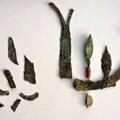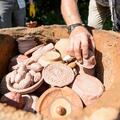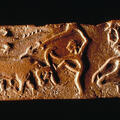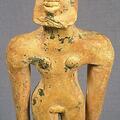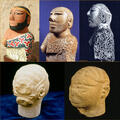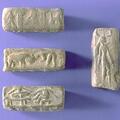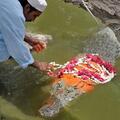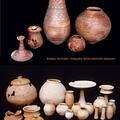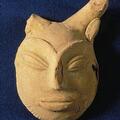Possible Indus Crown
Not yet absolutely clear that this is an ancient Indus-style crown, but the chances are pretty good with find first reported in August. Reports on follow-up excavations in December by A.K. Pandey of the Archaeological Survey of India suggest it really could be from ancient Indus times, though final stratigraphy is awaited. The fact that the crown includes faience and carnelian, two typical ancient Indus precious materials, is promising.
The August story can be found at Archaeology News Network.
Read also the December report 4,000-Year-Old Copper Crown in India and a seal example of a similar

